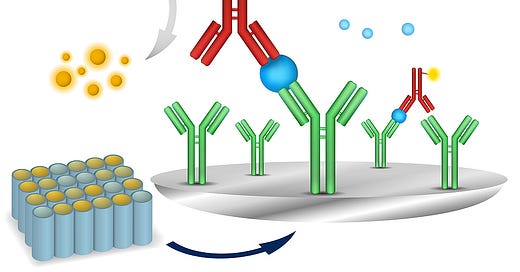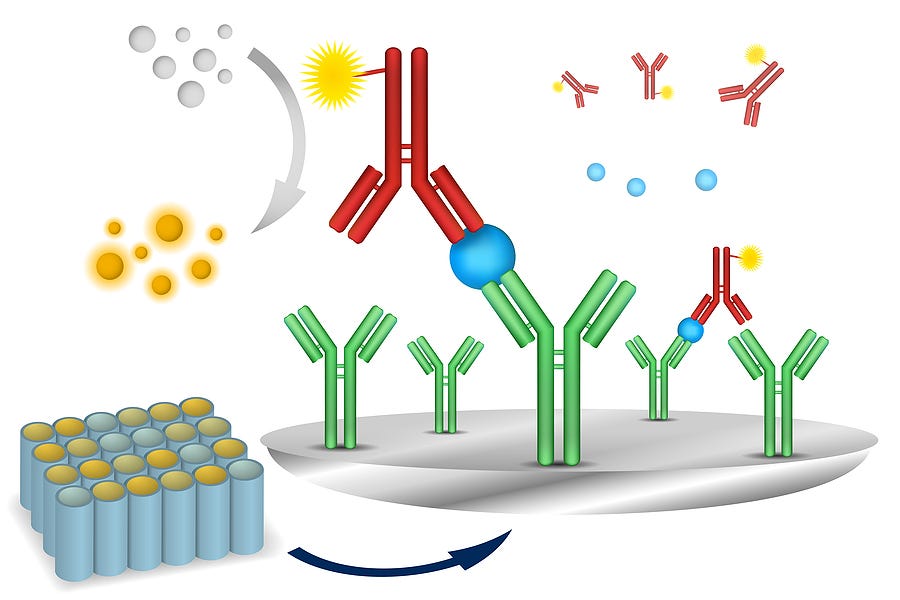186 | A Complete Guide to Allergen Management for Food Safety Professionals |
Plus insect food fraud (is this the first detection?)
Allergen management - a complete guide;
What (exactly) is precision fermentation?
Ozempic users buy fewer high-calorie foods (new research);
Reminder: submit your questions for the upcoming webinar;
Food fraud news, horizon scanning and recent incidents.
Hi!
Welcome to Issue 186 of The Rotten Apple, which features a massive guide to allergen management for food safety professionals.
Also this week, a short guide to precision fermentation, and news about how Ozempic use impacts food purchasing decisions - big food companies are right to be worried.
As always, this issue ends with food fraud news and incidents for paying subscribers. Including perhaps the first ever news of suspected fraud in edible insects.
Have a great week,
Karen
Reminder | AI Webinar 15th May
Our next live event, on Thursday 15th May, features AI expert Asli Solmaz-Kaiser, who will show us how AI can be used with big data to protect food businesses from food fraud.
We are collecting questions in advance. If you have questions about AI and its role in food fraud detection, submit them today.
Food Allergens Guidance
This month’s special supplement for paying subscribers is a comprehensive guide to food allergens, including global regulations, labelling guidance, tools for risk assessments, allergen control best practices and an absolutely massive resource list stuffed full of free checklists, templates, training materials, multilingual posters, and more.
It took me ages to put together for you, and I know you’re going to love it. Click the link below to check it out.
What is precision fermentation (exactly?)
As food professionals, we all know what fermentation is. It’s when microorganisms grow in ingredients and convert them into good-to-eat foods like beer, sauerkraut and yoghurt.
But what is precision fermentation, and why are we hearing this term more and more often lately?
Beer and yoghurt are products of traditional fermentation, foods that have been changed by microorganisms.
Humans also perform fermentations for the purpose of eating the organisms themselves.
For example, Quorn is a food made from fungal mycelium, the fibrous vegetative parts of the fungus Fusarium venenatum. The production process for Quorn and other mycoprotein food ingredients is called biomass fermentation because we eat the biomass that is produced in the fermentation process.
With precision fermentation, we don’t consume either the food/substrate or the organisms themselves. In precision fermentation, the goal is to separate compounds produced by the organisms, leaving the biomass as waste at the end of the process.
Precision fermentation is used for making compounds that are too difficult or expensive to obtain through traditional methods.
The microorganisms used for precision fermentation are genetically modified to produce the desired compounds efficiently. For example, rennet a material used in cheese-making, which used to be obtained from calf stomachs, is now almost exclusively derived from precision fermentation processes*.
While precision fermentation for food enzymes and flavour compounds has been around for decades, we are hearing about it more often now because of its role in producing major components of novel foods.
One high-profile example of precision fermented food is ‘brewed milk’, a technology that is being developed by companies like Perfect Day.
Brewed milk is a fancy name for non-animal whey protein isolate, beta-lactoglobulin, produced by a genetically manipulated strain of the fungus Trichoderma reesei. The non-animal whey protein is being successfully used by Perfect Day to make climate-friendly, vegan imitation ice cream that is said to have a genuine dairy taste.
Fun fact: Trichoderma reesei was discovered in World War II when soldiers in the Pacific Islands noticed mysterious holes in their canvas clothes and equipment. The holes were the result of the T. reesei “eating” the cellulose in the canvas.
Other precision fermentation ingredients that have been approved for food use or that are in development are soy leghemoglobin, the blood-like component of plant-based Impossible Burgers and vegan egg proteins made by Every Company.
* For the pedants: More precisely, the fermentation-derived enzyme chymosin is now used in place of calf rennet.
In short: 🍏 Precision fermentation is the high-tech production of specific compounds using genetically modified microorganisms 🍏 It’s been used for decades for food enzymes and flavour compounds 🍏 It is recently receiving more attention because of new demand for non-animal-derived dairy, meat and egg proteins 🍏
Sources:
Perfect Day. (2021). Partnering with nature to use less and make more [online] Available at: https://perfectday.com/process/.
Lawton G (2021) Brewing Milk. New Scientist Issue 3347, pp 46–49.
That’s interesting: How obesity drugs change behaviour
Obesity drugs - GLP-1 agonists like Ozempic - are big, big, BIG in the US right now. In fact, 12 percent of American adults have used them at some point, and 6 percent are using them right now (source). It’s a pretty big deal.
Usage rose by 700 percent among people without diabetes between 2019 and 2023 (source).

GLP-1 drugs, glucagon-like peptide-1 receptor agonists, are a class of medication that function by mimicking the action of hormones that regulate blood sugar levels and suppress appetite.
You may recall there was a lot of talk in the food industry last year about how GLP-1 agonists like Ozempic are posing a threat to the profitability of big food.
Share prices for companies like Pepsico and Krispy Kreme dropped significantly in 2023 after drug-makers announced the results of clinical trials that showed certain GLP-1 drugs had widespread health benefits beyond their traditional uses for the treatment of Type 2 diabetes.
With their use now so widespread in the US, we are learning more about the impacts of GLP-1 medications on shopping habits and dietary preferences.
Do they really pose a threat to big food?
It seems so! A study published in December 2024 reported on the effects of the drugs on household food spending. The effects are surprisingly large. Households with at least one GLP-1 user reduced grocery spending by 5.5 percent within six months of adoption, with wealthy households reducing spending by 8.6 percent.
The reductions came from “large decreases” in the number of calorie-dense processed items purchased, including an 11 percent decline in the purchasing of savoury snacks. Households with GLP-1 users also spent 8.6 percent less at fast-food chains, coffee shops and limited-service restaurants.
The researchers concluded, “Our findings highlight the potential for GLP-1 medications to significantly change food demand, a trend with increasingly important implications for the food industry as GLP-1 adoption continues to grow.”
A separate study on GLP-1 medications revealed that adults with alcoholism experienced reduced alcohol cravings and reduced alcohol consumption when they received low doses of semaglutide once per week. The effects were “medium to large”. Participants in the non-placebo group also reduced cigarette consumption during the GLP-1 alcoholism trial.
Thank you to
for alerting me to this story (check out Larissa’s newsletter here: Technically Food )Source:
Hristakeva, S., Jura Liaukonyte and Feler, L. (2024). The No-Hunger Games: How GLP-1 Medication Adoption is Changing Consumer Food Purchases. doi:https://doi.org/10.2139/ssrn.5073929.
Below for paying subscribers: Food fraud news, horizon scanning and incident reports
In this week’s food fraud news:
📌 Edible insects fraud - is this the first detection?;
📌 False halal chicken guilty verdict, illegally ripened bananas seized;
📌 Pistachio warning;
📌 Large-scale, multi-brand powdered milk counterfeiting operation discovered, plus more.
📌 Food Fraud News 📌
Pistachio vulnerabilities (new intel)
In this week’s horizon scanning news for paying subscribers, I share information about the changing food fraud vulnerability profile for pistachio nuts due to a sudden increase in demand, paired with a tightening of supply from certain export markets.
Pistachios also featured in an online post this week from a concerned food professional, writing about an aflatoxin-affected, and therefore potentially dangerous, shipment of pistachios that was allowed by the courts to be returned to its country of origin instead of being destroyed.
In such cases, the concern is that the exporter will re-export the aflatoxin-affected nuts to a different market in the hope that they won’t be tested.
If the exporter did this, it would be food fraud – the selling of unsafe food as if it is safe to avoid economic losses. It also poses food safety risks.
We’ve discussed this issue in the context of herbal ingredients (botanicals) previously, but I’ve not talked about this for food commodities until now.
Are such frauds happening today with pistachio nuts, while they experience supply-demand pressures? Perhaps. If I were purchasing pistachios, I would be increasing my surveillance for aflatoxins and other food fraud vulnerabilities.
Sources and more information:





